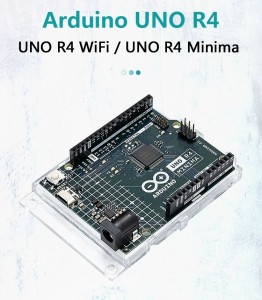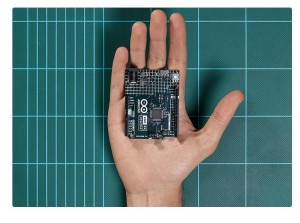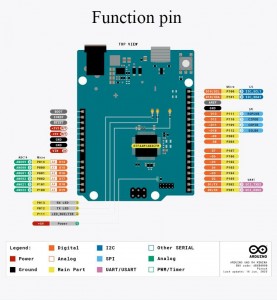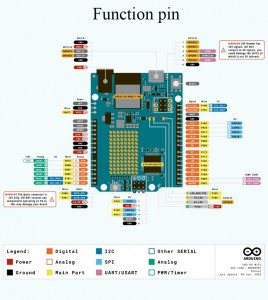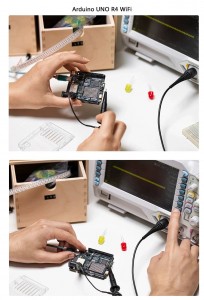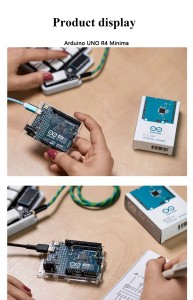Original Arduino UNO R4 WIFI/Minima motherboard ABX00087/80 imported from Italy
It runs on the Renesas RA4M1(Arm Cortex@-M4) at 48MHz, which is three times faster than the UNO R3. In addition, SRAM has been increased from 2kB in R3 to 32kB and flash memory from 32kB to 256kB to accommodate more complex projects. In addition, according to the requirements of the Arduino community, the USB port was upgraded to USB-C and the maximum power supply voltage was increased to 24V. The board provides a CAN bus that allows users to minimize wiring and perform different tasks by connecting multiple expansion boards, and finally, the new board also includes a 12-bit analog DAC.
The UNO R4 Minima offers a cost-effective option for those looking for a new microcontroller without additional features. Building on the success of UNO R3, UNO R4 is the best prototype and learning tool for everyone. With its robust design and reliable performance, the UNO R4 is a valuable addition to the Arduino ecosystem while retaining the known features of the UNO series. It is suitable for beginners and experienced electronics enthusiasts to deploy their own projects.
Peculiarity
● Hardware backward compatibility
The UNO R4 maintains the same pin arrangement and 5V operating voltage as the Arduino UNO R3. This means that existing expansion boards and projects can be easily ported to new boards.
● New onboard peripherals
The UNO R4 Minima introduces a range of on-board peripherals, including 12-bit Dacs, CAN bus, and OPAMP. These add-ons provide extended functionality and flexibility for your design.
● More memory and faster clock
With increased storage capacity (16x) and clocking (3x), the UNO R4Minima can perform more precise calculations and handle more complex projects. This allows manufacturers to build more complex and advanced projects
● Interactive device communication via USB-C
The UNO R4 can simulate a mouse or keyboard when connected to its USB-C port, a feature that makes it easy for makers to create fast and cool interfaces
● Large voltage range and electrical stability
The UNO R4 board can use power up to 24V, thanks to its improved thermal design. Multiple protection measures are used in the circuit design to reduce the risk of damage to the board or computer caused by wiring errors by unfamiliar users. In addition, the pins of the RA4M1 microcontroller have overcurrent protection, which provides additional protection against errors.
●Capacitive touch support
UNO R4 board. The RA4M1 microcontroller used on it natively supports capacitive touch
● Powerful and affordable
The UNO R4 Minima delivers impressive performance at a competitive price. The board is a particularly affordable option, cementing Arduino’s commitment to making high-end technology accessible
● SWD pin is used for debugging
The onboard SWD port provides manufacturers with a simple and reliable way to connect third-party debugging probes. This feature ensures the reliability of the project and allows efficient debugging of any potential problems.
|
Product parameter |
|||
|
Arduino UNO R4 Minima /Arduino UNO R4 WiFi |
|||
| Main board |
UNO R4 Minima (ABX00080) |
UNO R4 WiFi (ABX00087) |
|
| Chip | Renesas RA4M1(Arm@Cortex@-M4 | ||
|
Port |
USB | Type-C | |
| Digital I/O pin | |||
| Simulate the input pin | 6 | ||
| UART | 4 | ||
| I2C | 1 | ||
| SPI | 1 | ||
| CAN | 1 | ||
| Chip speed | Main core | 48 MHz | 48 MHz |
| ESP32-S3 | No | up to 240 MHz | |
| Memory | RA4M1 |
256 KB Flash.32 KB RAM |
256 KB Flash,32 KB RAM |
| ESP32-S3 | No | 384 KB ROM,512 KB SRAM | |
| voltage |
5V |
||
| Dimension |
568.85mm*53.34mm |
||
|
UNO R4 VS UNO R3 |
||
| Product | Uno R4 | Uno R3 |
| Processor | Renesas RA4M1 (48 MHz,Arm Cortex M4 |
ATmega328P(16 MHz,AVR) |
| Static random access memory | 32K | 2K |
| Flash storage | 256K | 32K |
| USB port | Type-C | Type-B |
| Maximum support voltage | 24V | 20V |
Products categories
-

Phone
-

E-mail
-

Whatsapp
-

Skype
-

Skype
-

Skype



